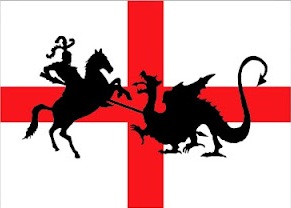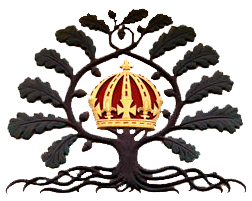How Individualism Is Killing Worship
 Embryo Parson Posted on
Embryo Parson Posted on  Tuesday, August 6, 2013 at 07:12PM
Tuesday, August 6, 2013 at 07:12PM So you’re sitting in church, happy for the break. You’ve just stood for 20 minutes straight while the praise band played, “I could sing of your love forever.” It felt like forever, you think to yourself.
But thankfully, the church needs money. So the worship leader prays for the offering, and finally says those blessed words, “You may be seated.”
Out come the offering plates. And the musicians begin to play an offertory song.
You know what happens next.
Before the band gets to the first chorus, he stands up.
You know the guy. He sits about three rows back from the stage. The moment the music starts to play he’s out of his seat, hands waving in the air, head swept back, swaying to the music in rapturous praise. I call him “Mr. First-On-His-Feet.”
Of course, once Mr. FOHF leaps to his feet, we all feel obligated to stand with him. He’s the reason we no longer sing while seated. Mr. FOHF is our role model — that enthusiastic worshipper we’re all supposed to be.
Slowly the rest of the congregation rises “as they feel led,” emerging like popcorn kernels in a skillet, a few at first, but eventually reaching critical mass. By the end of the song about three-quarters of the assembled worshippers are standing, while the rest remain seated. About a quarter are singing – the rest are merely spectating. About 10% are on their smartphones.
We’ve gathered together – to do our own thing.
Church wasn’t always like this.
In the church of my youth we did everything together. We sang together. Read in unison together. Sat and stood together. Took communion together.
We were given a little flyer when we walked in – an “order of worship” that told us exactly what would happen, and in what order. We did as we were told.
No one dared to break from the group and do their own thing.
But in the late 20th century a new focus on personal expression began to take hold in the church.
It started with the Asuza Street Revival in 1906. Pentecostalism encouraged individuals to express themselves within the confines of corporate worship. Ecstatic, individual expressions became the hallmark of Spirit-led worship.
Thus a new idea bloomed – that God touches us individually in worship, and we are free to respond as the Spirit leads.
Today’s hippest churches no longer distribute a order of worship. Although their services are timed down to the minute, the congregation is unaware that there’s even a plan. The worship service seems to start organically. The feeling is informal. The pastor and singers no longer tell us what to do – they simply bring the body of Christ together to respond to Him as individuals.
Now, how has this new understanding of worship affected men? There are a number of positives:
Worship is often a bit less predictable than it used to be.
- Services feel less “stuffy” and “religious.” They appear to be less human-driven and more God-driven (although in many cases this is largely an illusion).
- Empty ritual and meaningless traditions have been replaced with heartfelt and relevant expressions of faith.
- Worship originates more from the crowd than it does from the stage.
But every positive change has unexpected consequences. And as the focus has shifted to individual expression in worship, I fear we may have lost as much or more than we’ve gained:
- If church is dozens of people all doing their own thing, how are we modeling teamwork? Pastors will tell you it’s getting harder and harder to find volunteers. As churchgoers experience God individually they may be less likely to serve him corporately.
- Modern services are less militant and more intimate. The old worship placed us in a platoon, marching in unison into battle. God is no longer a General in front of us; he’s a friend sitting beside us.
- The more we individualize the worship experience, the more people will individualize their theology. Today’s believers know the Bible – but feel free to ignore its teachings. Could our meet-God-individually culture be contributing to this rebelliousness?
- Very expressive worshippers can distract us from God. They sometimes call attention to themselves, short-circuiting the transcendent aspects of worship.
- And here’s the big one: Individualism may eventually kill corporate worship altogether. If the focus of worship is “God and me” then why go to church at all?
I’m not saying that Mr. First-On-His-Feet is killing Christianity. But my heart slumps every time I see him rise. I used to think this was due to laziness on my part (or sore feet).
But now I realize that I’m longing for the church of my youth, and the sense of teamwork and unity it once fostered.
I’m in charge of my life 167 hours a week, but in church I want to be under authority. I want the pleasure that comes from giving up my willfulness and submitting to God through the leaders he has chosen. For one hour a week I don’t want to make the decisions – I want to be told what to do. I want to be a part of a larger whole, all moving in unison toward the single goal of glorifying God with our minds, bodies and spirits.
I’m not advocating a cold, rote worship in which we’re all automatons, blindly standing and sitting as directed. As with everything in life, balance is the key. How do we model unity while still giving individuals the freedom to worship as they feel led? My generation has thrown off the shackles of old time religion, but at what cost?
Personal autonomy is the god of our age. We’re pro-choice, pro-rights, do-your-own thing people. We are in charge and we make our own decisions. How sad that this mentality is now infiltrating our houses of worship.
This post was written by David Morrow. For the original post, go to: http://churchformen.com/church-culture/is-individualism-killing-worship/#sthash.2J7gpPsH.dpuf





Reader Comments